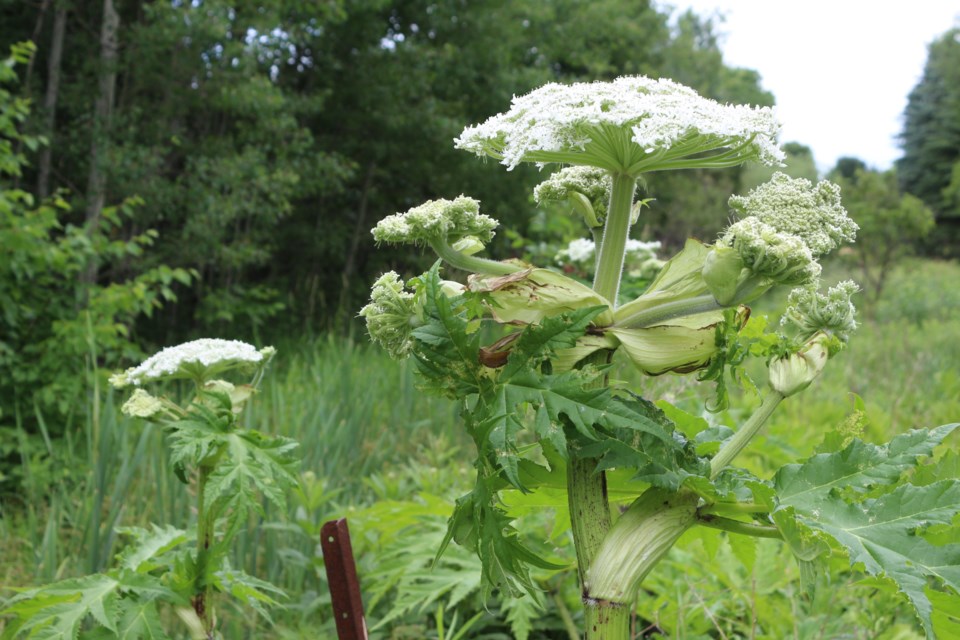It looks like Queen Anne’s lace on steroids.
Giant hogweed is just that: giant. Growing up to six metres tall, the flowering heads can be up to one metre across, and the huge plants can shade out native species, creating dead zones underneath their towering leaves.
That’s the least of the plant’s negative impact.
The sap of giant hogweed contains toxins that can cause blistering and third-degree burns, if skin that has contacted the sap is exposed to sunlight. The sap also causes temporary blindness.
The Lake Simcoe Region Conservation Authority (LSRCA) has sent out an alert on its Facebook page, asking residents of the watershed to be on the lookout for the invasive plant.
Giant hogweed is native to Eurasia; it is believed to have escaped from gardens, where it was planted as a novelty.
So far, said Sue Jagminas of the LSRCA, “we don’t have any confirmed sightings.”
Hikers have mistaken two other species — cow parsnip, which grows to a maximum height of three metres, and wild parsnip, which grows to two metres and has yellow flowers — for giant hogweed.
The two types of parsnip also contain toxins that can cause photosensitivity and blistering — but they don’t have the sap-filled hairs found on the stems of hogweed, that can release sap at the slightest touch.
“We haven’t had (giant hogweed) on any of our properties,” said Brian Kemp, manager of conservation lands. “We certainly are getting inquiries, by phone and by email. People are asking because they see something and feel it is hogweed.”
Every time there is a report or query, the conservation authority sends out staff to “confirm or deny,” Kemp said.
But so far, the sightings have all turned out to be cow parsnip, wild parsnip or angelica, which is in the same family.
The LSRCA is planning to put up signage warning that these plants can also cause dermatitis and blistering, he said.
“Just like poison ivy, you could be susceptible,” Kemp said. “The comforting thing is we haven’t found giant hogweed. We’re definitely keeping an eye out there.”
Giant hogweed, or heracleum mantegazzianum, is a member of the carrot family and is related to Queen Anne’s lace and lovage.
It flowers only once in its lifetime — but that’s more than enough.
Each plant typically produces 50,000 to 120,000 winged seeds that can remain viable in the soil for up to 15 years, according to the Ministry of Natural Resources. And the lightweight seeds are easily transported on the wind or by water.
If you do spot giant hogweed on your property or on a trail, you can report the sighting to the invading species hotline at 1-800-563-7711 or visit invadingspecies.com — and avoid the plant.
Giant hogweed should be removed by a professional, who is wearing protective gear.
Plants should not be burned or composted, but carefully placed in black plastic bags, sealed, and left out in full sunlight for a week to bake. Check with the local municipality on disposal regulations.
And if you do happen to brush up against the unfriendly giant, wash the exposed area with soap and water, stay out of the sun, and if blisters erupt, seek medical help.
Giant hogweed is now found growing wild in the Maritime provinces, Quebec, British Columbia, and in southern and central Ontario.
So, why would gardeners have chosen to import and grow something as nasty as giant hogweed?
“It’s a spectacular plant,” admitted Kemp — and a growing problem in Ontario.
